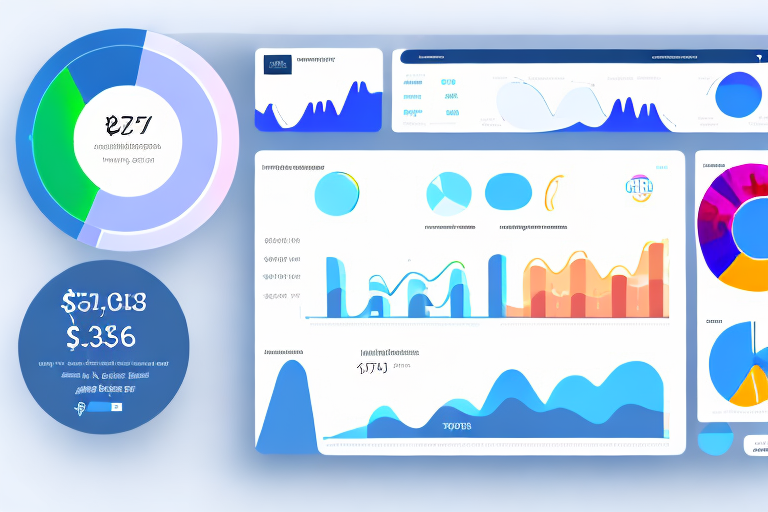How to Set Up Successful Influencer Marketing Campaigns
In today's digital landscape, influencer marketing has emerged as a pivotal strategy for businesses aiming to enhance brand awareness and drive sales. Influencers possess the ability to connect with vast audiences, making them invaluable partners for brands. However, crafting an effective influencer marketing campaign necessitates meticulous planning and execution. This guide provides a comprehensive overview of the key steps involved in establishing a successful influencer marketing campaign, from identifying the right influencers to evaluating and optimizing your results.
1. The Importance of Influencer Marketing for Your Business
Building Trust and Credibility
Influencer marketing leverages the trust that influencers have cultivated with their audiences. According to a Statista report, 49% of consumers depend on influencer recommendations to make purchase decisions. This trust translates to heightened credibility and a stronger reputation for your brand.
Enhancing Brand Awareness
Partnering with influencers who have substantial followings allows your brand to reach a broader audience. This expanded visibility is particularly advantageous for emerging or smaller businesses striving to establish their presence in the market.
Driving Engagement and Sales
Influencers create content that resonates with their followers, fostering higher engagement rates compared to traditional advertising methods. Engaged audiences are more likely to convert into loyal customers, directly impacting your sales and revenue.
2. Identifying the Right Influencers for Your Campaign
Understanding Your Target Audience
Begin by defining your target audience's demographics, interests, and behavior. Tools like Hootsuite and Buffer can assist in analyzing audience data to identify influencers whose followers align with your customer base.
Evaluating Influencer Metrics
- Engagement Rate: A high engagement rate indicates an active and responsive audience.
- Audience Demographics: Ensure the influencer's audience matches your target market.
- Content Quality: Assess the authenticity and relevance of the influencer's content.
Assessing Authenticity
Authenticity is crucial for maintaining trust. Collaborate with influencers whose values and messaging align with your brand. Reviewing their previous partnerships and content can provide insights into their genuine endorsements.
3. Establishing Clear Goals and Objectives
Defining Campaign Objectives
Clear objectives provide direction and measurable outcomes for your campaign. Common goals include:
- Increasing Brand Awareness: Expanding your brand's reach and visibility.
- Driving Sales: Boosting product or service sales through influencer promotions.
- Launching New Products: Introducing new offerings to the market with influencer support.
Setting SMART Goals
Ensure your goals are Specific, Measurable, Achievable, Relevant, and Time-bound. For instance, aiming to increase website traffic by 25% within three months through influencer partnerships provides clear direction and metrics for success.
4. Crafting a Compelling Campaign Message
Identifying Your Unique Value Proposition
Your campaign message should highlight what sets your brand apart from competitors. Clearly articulate your unique value proposition to resonate with both influencers and their audiences.
Tailoring Messages to Platforms
Different social media platforms require tailored messaging strategies. For example:
- Instagram: Focus on visually appealing content and storytelling.
- Twitter: Emphasize concise, impactful messages.
- YouTube: Utilize longer-form content for in-depth product reviews or tutorials.
Including Clear Calls to Action
Incorporate strong calls to action (CTAs) to guide audience behavior. Whether it's visiting your website, using a promo code, or participating in a giveaway, clear CTAs enhance campaign effectiveness.
5. Developing a Budget and Allocating Resources
Setting a Realistic Budget
Determine the financial resources you're willing to invest in your influencer marketing campaign. Consider costs such as influencer fees, product costs, and promotional expenses.
Allocating Funds Strategically
Distribute your budget across various elements of the campaign:
- Influencer Compensation: Allocate funds based on the influencer's reach and engagement.
- Content Production: Invest in high-quality content creation to ensure professional and engaging deliverables.
- Promotional Activities: Budget for additional promotions like sponsored posts or ads to amplify reach.
Choosing the Right Compensation Model
Influencers may prefer different compensation methods, including monetary payments, free products, or performance-based incentives. Clearly define and communicate compensation terms to establish mutually beneficial partnerships.
6. Negotiating with Influencers and Setting Clear Expectations
Establishing a Strong Partnership
Approach influencers with personalized and professional communication. Clearly outline the campaign's scope, objectives, and expectations to foster a collaborative relationship.
Creating Detailed Contracts
Develop comprehensive contracts that specify deliverables, timelines, compensation, and any exclusivity clauses. This ensures clarity and prevents misunderstandings.
Allowing Creative Freedom
While providing guidelines is essential, granting influencers creative freedom ensures that the content remains authentic and resonates with their audience.
7. Leveraging Multiple Channels to Amplify Your Campaign
Utilizing Social Media Platforms
Promote your influencer marketing campaign across various social media channels to maximize reach. Engage with followers by sharing influencer content and running targeted ads to attract a broader audience.
Incorporating Email Marketing
Use email campaigns to inform your subscriber base about the influencer collaboration. Include exclusive offers or content to encourage engagement and drive traffic.
Enhancing SEO Efforts
Optimize your website and content for search engines to improve visibility. Incorporate relevant keywords, high-quality backlinks, and compelling meta descriptions to enhance your SEO strategy.
8. Measuring and Analyzing Campaign Performance
Tracking Key Metrics
Evaluate the success of your influencer marketing campaign by monitoring metrics such as:
- Engagement Rate: Measures the level of interaction from the audience.
- Reach and Impressions: Indicates how many people have seen the content.
- Conversion Rates: Assesses how effectively the campaign drives desired actions.
Using Analytical Tools
Leverage tools like Google Analytics and Sprout Social to gather comprehensive data on campaign performance. These insights enable you to make informed decisions and optimize future campaigns.
Adjusting Strategies Based on Insights
Regularly review performance data to identify strengths and areas for improvement. Adjust your strategies accordingly to enhance effectiveness and achieve better results in ongoing and future campaigns.
9. Best Practices for Maximizing ROI with Influencer Marketing
Building Long-Term Relationships
Foster ongoing partnerships with influencers to maintain consistency and deepen brand loyalty. Long-term collaborations can lead to more authentic endorsements and sustained audience engagement.
Staying Updated with Industry Trends
The influencer marketing landscape is continually evolving. Stay informed about the latest trends, platform updates, and consumer preferences to keep your campaigns relevant and effective.
Ensuring Compliance with FTC Guidelines
Adhere to FTC guidelines by ensuring all sponsored content is properly disclosed. Transparency maintains trust and complies with legal requirements.
10. Common Mistakes to Avoid in Influencer Marketing Campaigns
Choosing Influencers Solely Based on Follower Count
Prioritizing follower numbers over engagement and relevance can lead to ineffective partnerships. Focus on influencers who genuinely connect with your target audience.
Neglecting Clear Communication
A lack of clear guidelines and expectations can result in misaligned content and objectives. Maintain open and consistent communication with influencers throughout the campaign.
Failing to Measure and Analyze Results
Without proper measurement, it's challenging to assess the campaign's success and ROI. Implement robust tracking mechanisms to evaluate performance and inform future strategies.
11. Inspiring Examples of Successful Influencer Marketing Campaigns
Fenty Beauty by Rihanna
Fenty Beauty's collaboration with Rihanna showcased a diverse range of influencers to promote a makeup line catering to various skin tones. This inclusive approach resonated with a wide audience, contributing to the brand's rapid success.
McDonald's All Day Breakfast Campaign
McDonald's leveraged influencers to highlight the availability of all-day breakfast options. Through strategic social media promotion, the campaign effectively reached and engaged a broad customer base.
12. The Future of Influencer Marketing: Emerging Trends
Rise of Micro-Influencers
Micro-influencers, with smaller but highly engaged followings, are gaining prominence. They offer more authentic connections and often boast higher engagement rates compared to macro-influencers.
Increased Demand for Video Content
Video content is becoming increasingly popular, with platforms like YouTube and TikTok leading the charge. Brands are investing more in video-centric campaigns to capture audience attention effectively.
Growth of Influencer-Led Ecommerce
Influencers are expanding their roles to include ecommerce ventures, creating seamless integrations between content and shopping experiences. This trend enhances the direct conversion potential of influencer campaigns.
Conclusion
Establishing a successful influencer marketing campaign involves strategic planning, selecting the right partners, crafting compelling messages, and continuously measuring and optimizing performance. By adhering to best practices and staying attuned to industry trends, businesses can harness the full potential of influencer marketing to achieve their marketing objectives and drive substantial ROI.




















